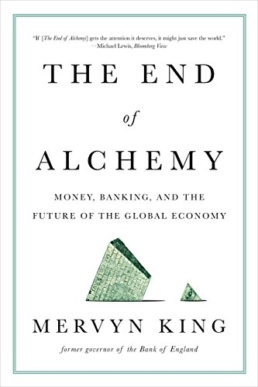Mervyn King.
Mervyn King looks like one of those old-fashioned bank managers who cast a paternalistic eye on the nervous customer. Or he could be a GP telling you that you really need to exercise more and go easy on the carbs. It is in this vein that he probes the state of the global economy; his diagnosis does not reassure.
Not for him is the Piketty-esque grand sweep. He avoids the hubris of the “I told you so” school (virtually none of them actually did tell us so ahead of time). He says he is not interested in the blame game, which is probably just as well considering that he was governor of the Bank of England at the time of the great crash of 2007-08. He baldly states: “No doubt there were bankers who were indeed wicked and central bankers who were incompetent, though the vast majority of both whom I met during the crisis were neither.” Many (myself included) might beg to disagree, but this argument has exhausted itself.
Instead, King ranges more widely, framing his argument around not just the dramas of that period but also the decade of lost growth that has followed. In spite of the “biggest monetary policy stimulus in the history of the world” the results have been anaemic. “Central banks have thrown everything at their economies, and yet the results have been disappointing,” he notes. “Whatever can be said about the world recovery since the crisis, it has been neither strong, nor sustainable, nor balanced.”
An entire generation has now become used to negligible or negative interest rates. It was, he points out with consistency of argument, not meant to be this way. Central banks are paralysed, fearful of doing anything that might presage another panic.
King delves into history in his quest for answers, from hunters’ arrows to the earliest banknotes (China in the seventh century AD). He finds little comfort. The banking system has, he contends, always been the weakest link in the economic chain. “Much of the financial history of the past 150 years is the story of unsuccessful attempts to maintain the value of money.”
It is at times of greatest prosperity that we should worry most. The first years of this century and the last of the previous one were, he reminds us, a time of wealth and spending. We were lulled into a false sense of security. He coins it the Good, the Bad and the Ugly. “Good was unprecedented stability… inflation targeting and central bank independence (you could call this period the Great Complacency). The Bad was the rise in debt levels. The Ugly was the development of an extremely fragile banking system.” While banks’ balance sheets have exploded, so have the risks associated with them. “Unlike aeroplane crashes, financial crises have become more, not less frequent.”
The Audacity of Pessimism is the title of the final chapter, and with good reason. Democracy, national sovereignty and economic integration find themselves incompatible. Public faith in the market to generate prosperity is at a new low. “Stagnation” has “once again become synonymous with capitalism”. The levers used to stimulate growth after past slumps – like an antibiotic used too regularly – will no longer work. Behavioural economics leads us nowhere because, more than ever before, we struggle to understand the way societies operate. Radical uncertainty and irrationality are the new normal. By this point, the reader should be reaching for their glass of whisky, whatever the doctor might say.




